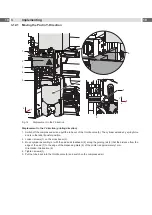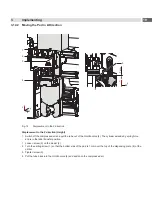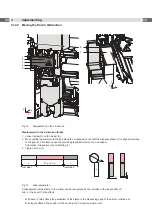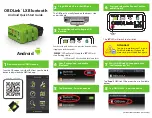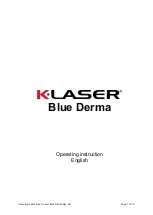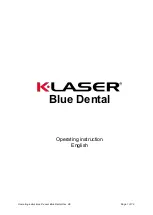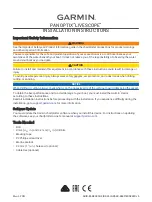
5
•
Before mounting the delivered components disconnect the printer from the power supply and close the shutoff
valve of the applicator.
•
Only connect the device to other devices which have a protective low voltage.
•
Switch off all affected devices (computer, printer, accessories) before connecting or disconnecting.
•
In operation, moving parts are easily accessible.
This applies especially for the zone, where the pad is moved between the starting and the labelling position.
During operation do not reach into that zone and keep long hair, loose clothes, and jewelry distant. Before any
manipulations in those areas, close the shutoff valve.
•
The device may only be used in a dry environment, do not expose it to moisture (sprays of water, mists, etc.).
•
Do not use the device in an explosive atmosphere.
•
Do not use the device close to high-voltage power lines.
•
Perform only those actions described in this manual.
Work going beyond this may only be performed by trained personnel or service technicians.
•
Unauthorized interference with electronic modules or their software can cause malfunctions.
•
Other unauthorized work on or modifications to the device can also endanger operational safety.
•
Always have service work done in a qualified workshop, where the personnel have the technical knowledge and
tools required to do the necessary work.
•
There are various warning stickers on the device. They draw your attention to dangers. Warning stickers must
therefore not be removed, as then you and other people cannot be aware of dangers and may be injured.
1.4
Safety Markings
1
3
2
1:
Risk of injuries by moving parts!
2:
The cylinder is under pressure
also if the printer is switched off.
Possibility of residual energy!
3:
Danger of crushing hands and
fingers by the moving pad!
!
Attention!
Never remove or cover safety markings!
Replace it in case of damage!
Fig. 1
Safety marking
1.5
Environment
Obsolete devices contain valuable recyclable materials that should be sent for recycling.
Send to suitable collection points, separately from residual waste.
The modular construction of the applicator enables it to be easily disassembled into its component parts.
Send the parts for recycling.


















